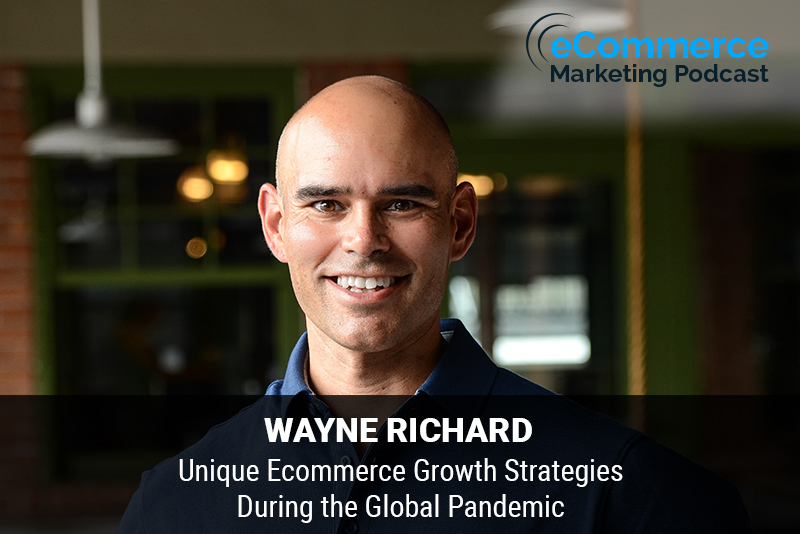
The eCommerce Marketing Podcast walks you through everything that goes into ecommerce marketing — from inbound marketing to paid advertising to conversions. Learn the strategies top marketing experts use to grow their businesses.
Marketing Strategies Revealed in this Episode:
- Unique growth strategies the ecommerce companies have been forced to utilize during the Global Pandemic
- Growth strategies of the past that are totally out of the question in this current environment
- Strategies that businesses should double down on now
- Companies that have done a great job in pivoting in this current situation and what they have done to increase growth these days

Episode Title: Unique Ecommerce Growth Strategies During the Global Pandemic – with Wayne Richard
Host: Arlen Robinson
Guest: Wayne Richard, Partner and Chief Operating Officer at Bean Ninjas
In this episode, Arlen Robinson interviews Wayne Richard, the author of “A Detailed Guide to eCommerce Accounting” and host of the Bean Ninjas podcast. Wayne shares his journey from a corporate career at Hewlett Packard to becoming an equity partner at Bean Ninjas. He provides valuable insights into how eCommerce businesses can pivot and grow during the COVID-19 pandemic by implementing new strategies and adapting to changing market conditions.
Key Takeaways:
- Introduction to Wayne Richard (00:25)
- Wayne’s background in accounting and his transition from corporate life at HP to founding a cloud accounting firm and partnering with Bean Ninjas.
- Messaging the Moment (08:40)
- The importance of tailoring marketing messages to address the current concerns and needs of customers during the pandemic.
- Supporting Causes and Charities (12:20)
- Aligning sales with essential causes or charities to create a meaningful impact and resonate with customers.
- Bundling Offers and Discounts (14:55)
- Offering bundled products, discounts, and free gifts to increase conversion rates and provide value to price-sensitive shoppers.
- Pivoting Sales Channels (20:10)
- Moving away from single-channel reliance, especially on Amazon, and adopting an omnichannel strategy to diversify sales.
- Exploring New Markets (24:15)
- Expanding into different geographic markets and adjusting product offerings to suit new customer bases.
- Focusing on Cash Flow Management (27:00)
- Understanding and managing cash flow effectively, hiring consultants, and implementing financial tools to ensure business sustainability.
- Examples of Successful Pivots (38:45)
- Nike’s shift to achieve 30% of sales from direct-to-consumer channels ahead of schedule.
- Lululemon’s success in generating 50% of revenue from DTC sales.
- Gymshark’s effective use of preorders and supplier terms to fund growth.
Wayne Richard is the Partner and Chief Operating Officer at Bean Ninjas, a cloud accounting firm that provides eCommerce entrepreneurs with the financial tools and insights needed to grow their businesses. Wayne is also the host of the Bean Ninjas podcast and the author of “A Detailed Guide to eCommerce Accounting.”
Contact Wayne Richard:
- Website: Bean Ninjas
- Twitter: Everyday Superhero
- LinkedIn: Bean Ninjas











